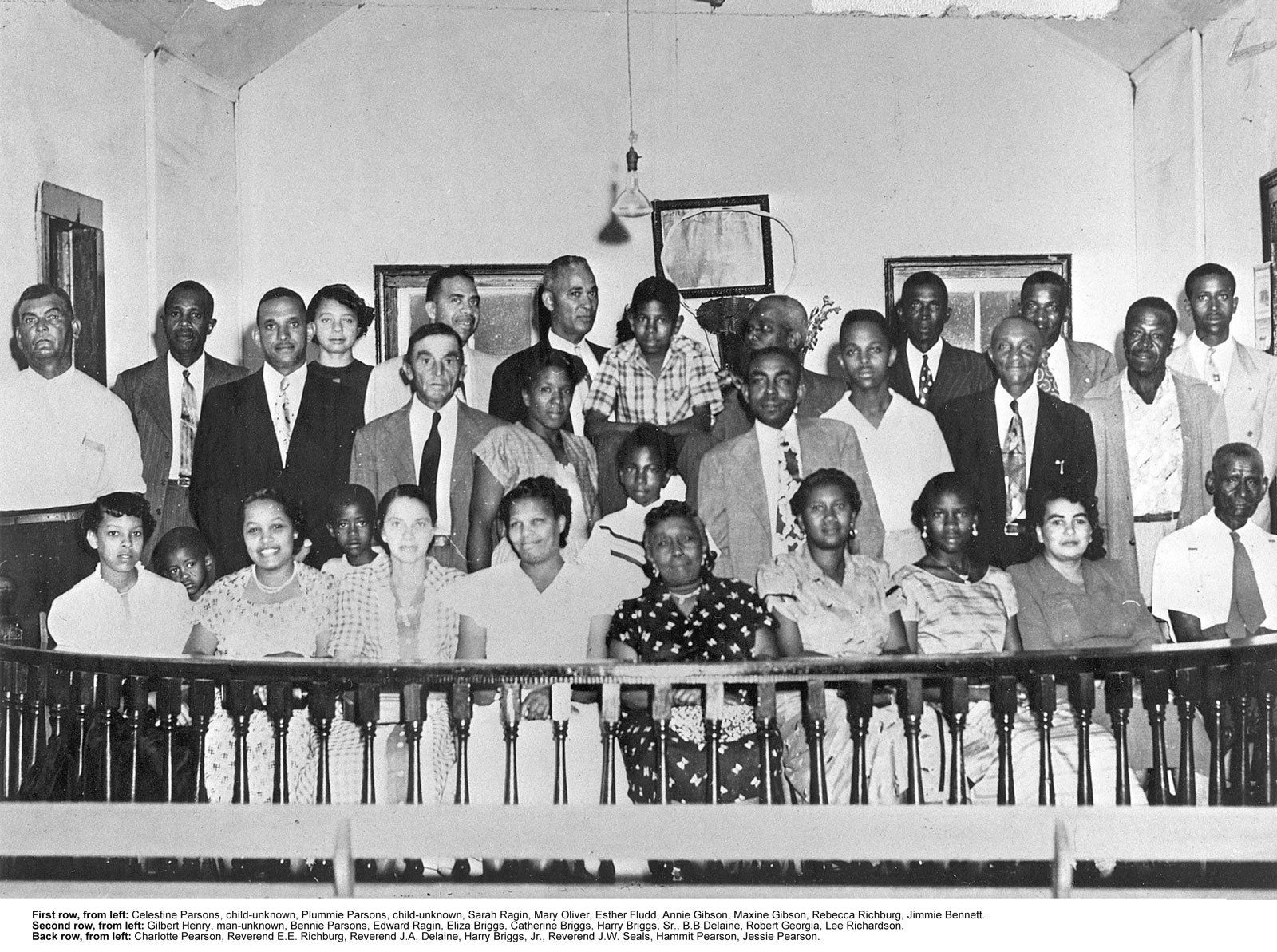This is BEN GREENBERG's portfolio site.
Contact Archives Search Feed Blog🔗 About ↑This is BEN GREENBERG's portfolio site.
Contact Archives Search Feed Blog🔗 About ↑This article was originally published by American Experience to accompany its documentary, THE BLINDING OF ISAAC WOODARD. Written by Claudia Smith Brinson and edited by Ben Greenberg.
 Petitioners in Briggs v. Elliott pose for a group picture at Liberty Hill AME in Summerton, ca. 1951. Credit: Cecil Williams
Petitioners in Briggs v. Elliott pose for a group picture at Liberty Hill AME in Summerton, ca. 1951. Credit: Cecil Williams
Swamps. Pine forests. Corn, cotton and tobacco fields. Hog farms. Flat dirt roads bordered by the fields and the forests. Pellagra, caused by malnutrition. Malaria, caused by the swamps and bays harboring mosquitos—in 1944, 39 percent of people living on the north shore of Lake Marion test positive. Illiteracy—at least a tenth of white residents and a third of Black residents can’t read or write. This is Clarendon County, South Carolina.
When the weather is good, Robert and Carrie Georgia hitch their two mules to their wagon, call on their six children and ride from Friendship to St. Paul townships. Normel, the firstborn, hates the night’s return, the mules’ pathway lit only by a lantern. White men roar by, firing shotguns out of car windows, speeding away into U-turns, returning to shoot again, careless of terrified children or panicking mules. The Georgias are Black; the gunslingers are white.
When the weather is bad, Levi Pearson starts up his pickup—for the children of Davis Station, not for farm work. South Carolina provides bus transportation only to white children. Clarendon County runs more than 30 school buses for white children, none for Black children. Ferdinand Pearson walks seven miles, one way, to Mount Zion School, which has two rooms and one stove. Siblings Jesse and Piney Pearson walk nine miles, one way, to Scott’s Branch in Summerton. This is why Levi Pearson puts boards across the back of his truck—to get children to school.
Read the full article at American Experience
Claudia Smith Brinson is the author of Stories of Struggle: The Clash Over Civil Rights in South Carolina, her decades-long investigation into and collection of the personal stories of black civil rights activists. She has worked as a journalist for more than 30 years in Florida, Greece and South Carolina. Brinson held the Harriet Gray Blackwell Endowed Professorship at Columbia College, where she designed and led the Writing for Print and Digital Media program from 2006-2016.